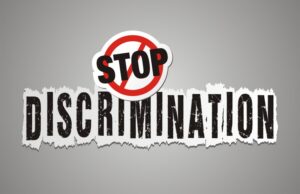U.S. Supreme Court Order in TJ High School Case

Today, the U.S. Supreme Court issued an order in the Thomas Jefferson High School case involving racial discrimination in the criteria for admission to the elite school. The order denied the plaintiffs’ motion to vacate a “stay” that had been entered by the Court of Appeals.
It’s easy to be confused about what the order means, and what its significance is, so here is a brief summary.
Proceedings in the Trial Court
Thomas Jefferson High School for Science and Technology was the top-rated high school in the country. Admission was rigorous, based on a standardized test, the student’s GPA and completion of certain math classes in middle school, and teacher recommendations. Under the strict meritocracy standards, over 70 percent of the students were Asian Americans, and the percentages of African American and Hispanic students were in the single digits.
In an effort to achieve a more “equitable” distribution of the student body, the Fairfax County School Board adopted a new admissions policy that (i) eliminated the standardized test, (ii) guaranteed admission to the top-performing 1.5 percent of the students in every middle school in the county, and (iii) awarded bonus points for socio-economic factors such as family income and living in an area historically under-represented at TJ. In the first freshman class admitted under the new criteria, the percentage of Asian Americans dropped dramatically, from 73 to 54 percent.
The new admissions policy was challenged by a group called Coalition for TJ. In February of this year, the U.S. District Court in Alexandria, Virginia ruled in plaintiffs’ favor. The court found that although the new standards carefully avoided mentioning race as a factor, the clear intent was to discriminate against Asian Americans in favor of other minority groups. Therefore, the court held that the new admissions criteria were unlawfully discriminatory on the basis of race.
In cases like this, the losing party typically asks the trial court to enter a “stay” of its order pending appeal. The argument essentially is: “Your Honor, you ruled against us, but we’re going to appeal, and your decision might be overturned by the appellate court. It would be very disruptive to require us to go back to the old admissions policy, and then, when we win, to reinstate the new admissions policy. So, please let our revised admissions standards remain in effect while we appeal your decision.”
That argument sometimes works, but it didn’t in this case. The trial court, apparently confident that its decision would be upheld on appeal, denied the School Board’s motion for a stay.
Proceedings in the Court of Appeals and Supreme Court
The School Board immediately appealed, and it asked the Court of Appeals to enter the stay that the trial court had denied. That court agreed with the School Board; it ruled that the Board’s new admissions standards could remain in effect for the next school year, while the court considers the underlying merit of the trial court’s ruling.
The plaintiffs then filed a petition in the U.S. Supreme Court, asking that court to overrule the Court of Appeals’ stay. Justice Roberts ordered the School Board to respond, which it did.
In today’s ruling, the Supreme Court refused to interfere with the Court of Appeals’ stay order. The Court entered a one-sentence denial of plaintiffs’ petition.
Significance of Today’s Supreme Court Order
Today’s Supreme Court order is a small, temporary loss for those challenging the School Board’s new admissions criteria, but the ruling should have been expected. The Court of Appeals clearly had the discretion to enter a stay. It would have been extraordinary for the Supreme Court to overrule the appellate court at this stage of the case. I wouldn’t have been surprised if the plaintiffs’ emergency petition had been rejected by a 9-0 vote in the Supreme Court.
Looking at the bigger picture, today’s order may portend ultimate victory for the Coalition for TJ. Why? Three Supreme Court justices (Thomas, Alioto and Gorsuch) said today that they would have granted the application to vacate the Court of Appeals stay. That suggests a strong feeling on their part that the trial court correctly decided the case. Only two of the six other Justices would need to agree in order for the plaintiffs to prevail.
It remains to be seen how the Court of Appeals will decide the case, and, after that decision, the Supreme Court might or might not review what the appellate court does. The bottom line, however, is that today’s order dealt only with an interim matter on which the Coalition for TJ was facing a steep uphill climb. The order should not be taken as a sign that the trial court’s ruling on the merits of the case will be overturned.


…thanks for the clarification…
Thank you for this very helpful explanation.
Very clear explanation of legal mumbo jumbo! Many thanks!
Excellent summary, Mark. It clarifies what you correctly indicated was a rather confusing situation.